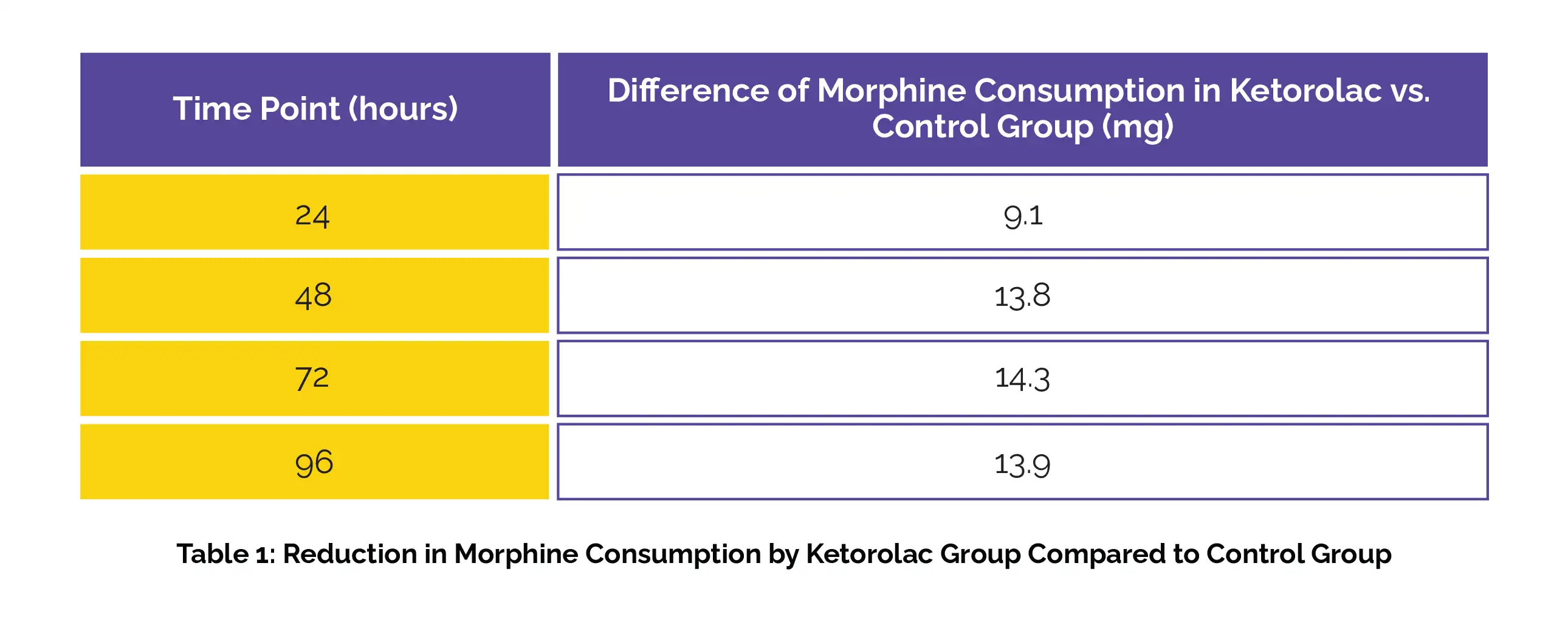Categories
Change Password!
Reset Password!


To investigate the effectiveness of the administration of Ketorolac 30 mg for managing pain and opioid usage post-spinal fusion.
Ketorolac + Bupivacaine reduces early post-operative pain and decreases total morphine use following posterior lumbar spine surgery.
To investigate the effectiveness of the administration of Ketorolac 30 mg for managing pain and opioid usage post-spinal fusion.
Patients undergoing multilevel posterolateral spinal fusion were assigned to two groups. In the control group, patients were administered Bupivacaine 0.5% injection (local anaesthetic) to paraspinal muscles before the closure of the wound. In the Ketorolac group, the patients received an additional Ketorolac 30 mg along with Bupivacaine 0.5%. Post-surgery evaluations included a numerical rating scale (NRS) for back and leg pain, morphine use, and adverse event tracking.
Forty-seven patients (mean age = 60.9 ± 6.9 years) were randomized into groups: The Ketorolac group (24 patients) and the control group (23 patients).
The average NRS for back pain was 5.8±3.0 points in the control group and 3.3±2.1 points in the Ketorolac group noted after 6 hours of the surgery. Also, lesser morphine use was prevalent in the Ketorolac group than in the other group (Table 1):

Adding Ketorolac to Bupivacaine for surgical wound infiltration after lumbar spine surgery relieves early post-surgical pain and lowers overall morphine use compared to bupivacaine only.
Spine
Addition of Ketorolac to Local Anesthesia for Wound Infiltration in Multilevel Posterior Lumbar Spinal Fusion: A Randomized, Double-Blinded, Placebo-controlled Trial
Nattharut Chaibhuddanugul et al.
Comments (0)